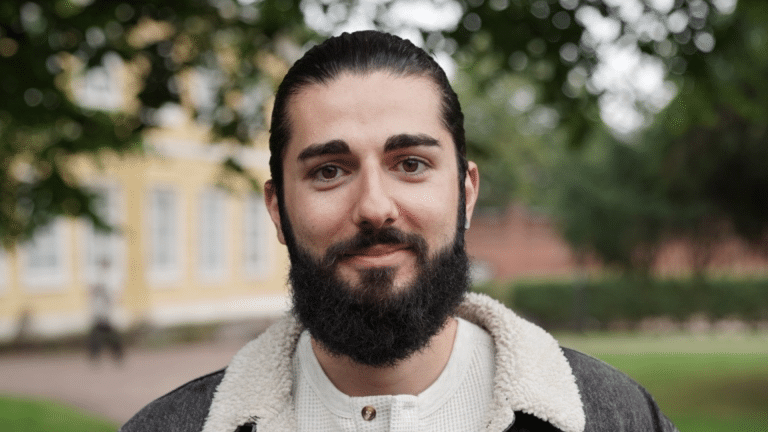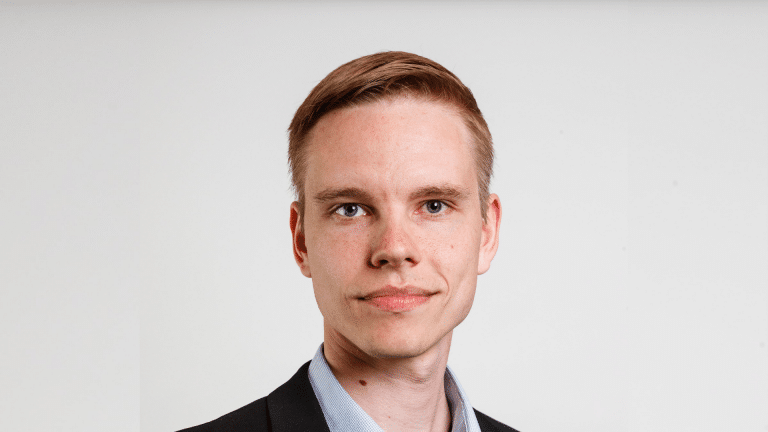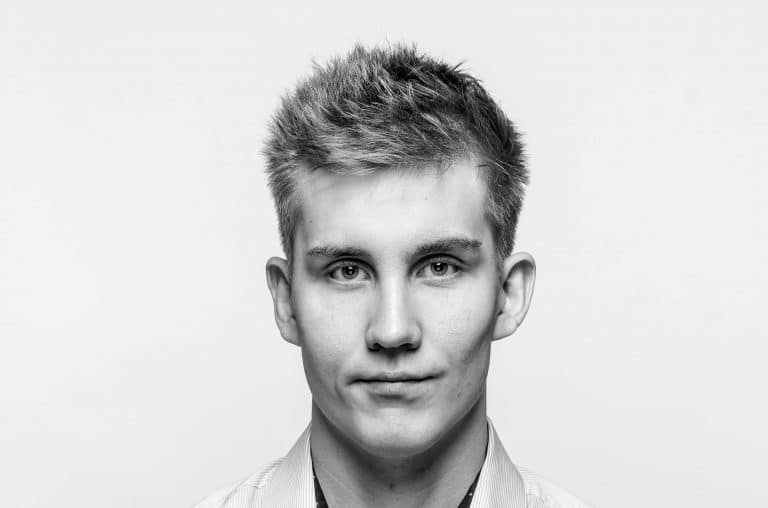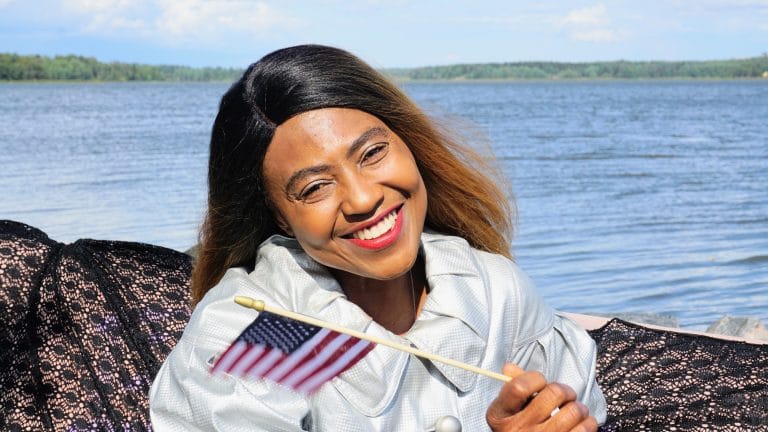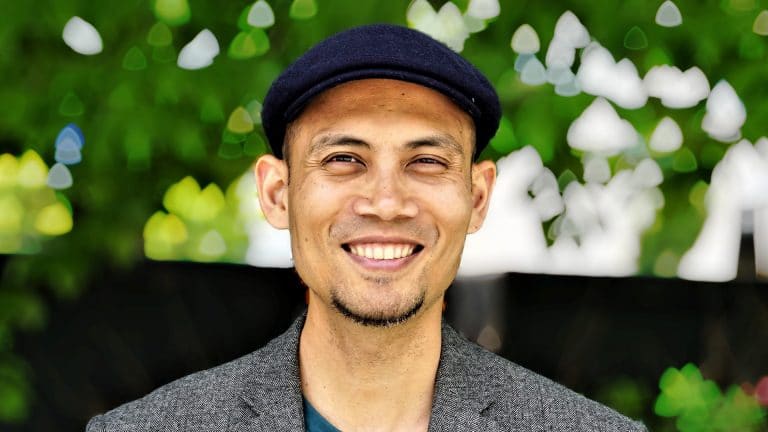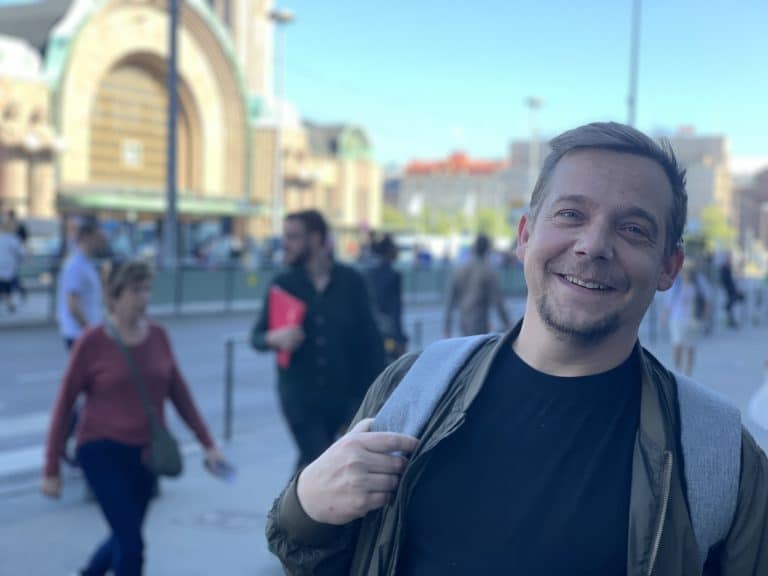My first inventive solution - muting game’s sound to play it in class
From a young age, I have been interested in all sorts of different sports. I was born in 1969 in Tornio, Northern Finland, and I was quite active so my spare time would involve a lot of different things. From swimming, cycling and fishing in the summer to skiing and ice skating in winter. On top of that, I was interested in sports like football, bandy, and basketball.
I was always up for trying something new and even took up judo at some point. I had a very vivid imagination, and I often started ‘innovating’ how something could be done differently to make it unique or to keep it interesting.
I remember in school, my friend and I came up with our own way of communicating. Instead of passing out notes, we used our own made-up sign language to communicate from one side of the class to the other.
Possibly the first sort of inventive solution I remember coming up with was when handheld electronic games became popular among kids. We’d play them for hours after school, and I started thinking that maybe we could also play them in class if the sounds were muted. Back then, games just came with sound, and there was no way to adjust the volume without opening the thing up and disconnecting the speaker manually.
With sports, in particular, I remember how we didn’t always have enough players for football. I was trying to think about how we could play with just a few guys and came up with ‘Tub Ball’. Tub Ball didn’t require more than three or four guys, and all it involved was kicking the ball into a tub. It was great fun.
Then came remote-controlled cars and boats. After the initial excitement wore off, I became bored with them, and started thinking could I not use a remote-controlled boat for something more interesting. And then hit me, what about fishing?! So I attached a fishing line onto a remote-controlled boat, and then just sat on the dock to fish.
I was also quite crafty when I didn’t have a fancy canoe to river raft with. I took an inner tube of a tractor tyre and filled it with air, and just hung onto it for dear life when coming down the rapids. It was exhilarating if not a tad dangerous, especially when my swimming skills were still a little limited.
When I got my first air rifle I remember being upset when I realised I couldn’t use it in winter or indoors. So I hung framed pieces of paper all around our house and did target practice using Blu-Tack during the long off-season. I started hunting with my dad and brother when I was pretty young, and it’s still something I try to find time every now and then.
A thought of mine when I was 10 - “There’s got to be a way to automate this”
The first time something didn’t make any sense to me, in this same way, was when my friends got a job counting cars. The goal of the counting was to analyse the flow of traffic in the city. I was only about 10 or 11 at the time but I remember thinking how there just had to be a better way, and that counting should somehow be automated.
A little after that I got a summer job working in a steel mill. I was entrusted with the role of the ‘hall-whiz’, which involved identifying and marking the correct steel rolls next in line for processing. There must have been thousands of rolls in the enormous hall, scattered all over the hall floor, which was probably a good kilometre in one direction and at least half a one in the other.
It could take several kilometres of walking to identify just one roll, and after a while, I thought there just has to be a way to automate the process.
Years later, I wrote my engineering thesis about how to automatically identify those rolls.
Entrepreneurship wasn't something I had definitely decided to do
Before I became an entrepreneur, I worked for Nokia for nearly 15 years. Over the years, I worked at a number of different Nokia sites. I started in Salo, Finland, then moved to Copenhagen, Denmark, then to Southwood, UK, then to Bengaluru, India and finally back to Oulu, Finland.
Shortly after I had moved to Copenhagen, Nokia’s product portfolio expanded from just a few product launches a year to 50. Testing had previously been largely manual but became an impossibility with the portfolio expansion. It required a significant amount of work of extraordinary difficulty and three long years to complete an automated framework that enabled managing the Herculean Labour.
When I look back on my career, I see clear patterns of how I’ve approached tasks. I’ve always sought out to solve problems, complete tasks using fewer resources, figure out how to increase efficiency and how to improve quality.
I had sometimes considered becoming an entrepreneur over the course of my corporate career – sometimes more seriously than at other times – but it wasn’t something I had definitely decided to do.
Until Broadcom laid off 650 people. That’s what catalysed my decision to become an entrepreneur.
The inventions in Donald Duck have had a big influence on me
I’m sometimes asked if I’ve had any inspiring role models, but I have to say I’m not sure I’ve ever really had one. Probably the closest thing to a role model is Donald Duck, although perhaps he’s better described as an early influencer.
There were many times when I was just captivated by the weekly Disney comics magazine’s cover, which depicted incredibly inventive ideas. I remember Donald having tied a rope to a self-propelled lawnmower to automate yard work, and glueing dishes onto a picnic table for easy al-fresco, garden-hose washing.
To me, many of these jokey ideas struck me as really smart, and I wondered how come they didn’t seem to exist in the real world.
I weighed my options and decided to go it alone
After the Broadcom layoffs, some of my colleagues and I formed a group and started regular meetings to discuss business ideas we could pursue together. Initially, there were about ten of us, but without a grand idea, the ranks quickly thinned and the meetings were discontinued.
I weighed my options and decided to go it alone. At the time, there was a lot of buzz around the emerging Internet of Things, and I was interested in doing something related to this leading-edge technology. I was trying to decide on a promising business case, and carefully considered a number of ideas, but nothing felt ‘right’.
Sometime later, my wife and I were in Lapland on a ski trip, and as always, I had waxed her pair of skis as well as my own. As we skied on, she started feeling her skis were gliding less than perfectly smooth. She wondered if I’d applied the wax correctly, or if perhaps another wax should have been used instead. Soon after, she suggested the weather conditions were maybe affecting her skiing.
I couldn't find the thing I want in the market
This inspired me to look into getting a device that somehow measures how well the ski glides, also taking into account the weather conditions, but I couldn’t find anything in the market.
I then went to see an old friend of mine, a retired competitive skier who was responsible for waxing the skis of the Finnish cross-country skiing national team. He said he had never come across the kind of device I described but suspected there might be a demand for it, especially among the professionals.
There are four main factors that influence a cross-country skier’s performance: the athlete’s physiology, the weather including humidity and snow temperature, the skiing performance and the technique.
Out of these four factors, only the athlete’s physiology is beyond the scope of SKIIOT. Enabling the continuous need to measure is a rather revolutionary one when you consider the outside temperature can vary as much as 18 degrees Celsius over the course of a track. It’s still common to only have one or two measuring points.
The amount of learning involved in being an entrepreneur is intense
SKIIOT is my first real innovation and my first real product. I’ve applied for three patents relating to the gliding of the ski, and the patent related to measuring the gliding has already been approved.
The amount of learning involved in being an entrepreneur is intense, and in addition to absorbing information, you also have to know how to apply it. Even so, I’d still say the biggest challenge for me has been funding and being able to convince people of the potential I see so clearly.
With SKIIOT, convincing the target customer group -which consists largely of professional or semi-professional skiers- of the benefits of a matchbox-sized IoT device proved a hard nut to crack. Especially with the marketing capacity, we could manage at that point.
Look for funding outside of Finland
My experience with SKIIOT really taught me to look for funding outside of Finland. There is public funding available, which is great, but it’s extremely focused on Research & Development. Funding continues to be needed even when the product is ready because getting to market is no small feat.
In Finland in general and in Oulu in particular, the private investment scene is pretty dire, in my experience. Many angel investors are only investing in ready or nearly ready patented or patent-pending innovations; preferably with global potential and yet they often offer the inventor what can at best be described as an aggressive company valuation. Most of the time the amounts discussed just aren’t enough for proper execution.
One of my proudest achievements with SKIIOT is cooperating with the Norwegian Olympiatoppen. They are the highest authority in Norwegian elite sports and they used SKIIOT at the Winter Olympics in South Korea in 2018.
The only thing that has changed over the last 75 years is how the microwave ovens look on the outside
The second problem I found and wanted to solve was how microwave ovens work. I started wondering why the user has to guess the time and power needed. Having to guess results in errors, and in the microwave oven context, guessing often leaves the food or drink too hot or too cold.
All microwave ovens have always worked like this, and the only thing that has changed over the last 75 years is how the microwave ovens look on the outside. To me, it seemed completely backward. I couldn’t choose to heat my pizza until it’s evenly heated to, for example, 63 degrees, or baby food to 37 degrees.
I was in the sauna and came up with an idea
I started thinking about using electronics inside the oven to measure the temperature of the food or drink but quickly dismissed it thinking it must be impossible. Then one day I was in the sauna and came up with an idea when sitting down and enjoying the heat. If my theory proved true, I should be able to put a beer can in the micro without damaging the can or the oven. I quickly got out of the sauna and put a beer can in the micro for 10 seconds.
I was half-expecting it to explode, but it didn’t. When I took it out, the can was still cold. I put it back in, this time for a full minute. Still no explosion, still cold. I then cut open the can, put in some very basic electronics, and tried again.
When nothing happened to the electronics encased in the can, I called the test a success and considered the can my first rudimentary prototype. Soon after, I presented the idea to an investor who immediately got on board. With funding secured for a proper first prototype, I got to work using a subcontractor to devise a battery-operated version of the idea.
When the prototype was ready, I went and did some field tests in the local Gigantti, where to my relief and to the surprise of the floor staff, it worked like a charm in every available microwave brand and model.
The only thing I was concerned about was the fact the device was battery-operated, which meant the users would have to change the batteries themselves. In addition to wanting a non-battery-operated device, I also wanted to harvest the heating energy, and I just couldn’t find the necessary competence for what needed to be done next in Oulu.
I then came across DA-Group from Forssa in southern Finland whose advanced embedded technology solutions are used in, for example, space technology, and who just so happens to be specialised in microwave technology.
When you're working with technology, you'll encounter a world of problems
I started cooperating with them to further develop and commercialise the idea. When you’re working with technology, you’ll encounter a world of problems. Cost is one important issue, but we also had to solve how to handle the steam rising from the heating food, among other things.
We were working on an add-on device to the microwave, but ensuring the compatibility of the extension with all existing brands and models – some of which are in industrial use – proved too complicated.
We decided it was much more sensible to integrate the solution directly into the microwave oven itself. Now after completing the research & development, we have the world’s first temperature-controlled microwave oven. The user selects the desired temperature for the food, and the micro stops automatically when the pre-defined temperature is reached.
We’re planning to licence the technology, and are already in discussions with some of the largest manufacturing companies in the world. If licencing the technology doesn’t work out, we’ll bring the micro to market together with a partner.
Cmicro has already been granted a patent, which to me, is like icing on the cake. With Cmicro, I’ve also experienced how some people, investors even, just lack the vision that is perhaps unjustly but often expected of them. In the end, all that matters is those good ideas get executed, regardless of the route.
When I started SKIIOT, I was interested in developing either a sports product or a medical device. I didn’t have any hospital contacts or connections and knew developing a medical device without collaborating with healthcare professionals was an exercise in futility.
Measuring pain - a problem with significant global potential
Three years later, I came across the local Northern Ostrobothnia Hospital District’s innovation competition, in which solutions were sought to some of the most common problems faced by healthcare professionals in their daily work.
One of the problems sought to be solved was measuring pain. I decided to throw my hat in the race, wrote a proposal, and to my surprise, won. At the time, I already had founded two companies and was hesitant about founding a third. So, to make sure it was a valid idea, I decided to take part in another competition, the Polar Bear Pitch held in Pori and won that too.
I realised this was a real medical problem, and there was a pressing need to solve it. This was also a problem with significant global potential.
It was of utmost importance that winning the hospital district’s innovation competition meant getting to work closely with healthcare professionals. We received continuous feedback, input, and requirements, and also collaborated with Oulu University on the project. After the first prototype was ready, we continued to collaborate with the local University Hospital, and I’d go as far as saying that devising a medical device such as ours would be mission impossible without close cooperation with the intended target users.
Regulatory approvals, product testing, and certification and compliance challenges add time, complexity and costs to the project. During the development stage, making a medical device is more like climbing a mountain than a hill.
Kipuwex has been issued a patent (two are pending), earned a lot of international attention, won awards, secured funding, attracted investors and received significant pre-orders, all of which are testament to the efforts of our ten-strong team. We aim to deliver the first batch of products in
the next six months.
Being an entrepreneur is like running a marathon
To me, being an entrepreneur is like running a marathon. The first thing you need to do is decide you’ll run it. It has to be a firm decision. Once you’ve decided to run, you need to start preparing for it.
The research and development process of a product is typically about three years, longer for medical devices, so you’ll have to have patience. You should expect delays, roadblocks and development challenges, and it’s not going to be easy.
It’s not like a track you can just run through. Like in a marathon, product development consists of different stages.
You should aim to reach each of them one by one instead of focusing on just crossing the finishing line. It’s really important to celebrate the completion of different milestones, and the first milestone worth celebrating is founding the company. Recruiting the right person to the right position is also worth celebrating.
Negative comments and nay-saying are also part and parcel of being an entrepreneur
Positive publicity is always great, it boosts the chances of you getting noticed and maybe finding funding, collaboration partners or customers. Negative comments and nay-saying are also part and parcel of being an entrepreneur, and you just have to develop a thick skin and not take any of it personally. In fact, I happen to think you should embrace criticism and see it as a learning opportunity.
Finishing a prototyping process is an incredibly important step, rewarding for everyone involved and most definitely worth making a big fuss about. I’ve applied for patents in all three of my companies, and consider my six patents among my greatest professional achievements.
However, it’s nearly impossible to do anything without sufficient funding. Plus every time you secure a grant, a loan or an investment, it means you’ve convinced someone to believe in your ideas. Every time this happens, stop and take stock.
Always have a plan B
Then when you land your first customer, I’d say it’s the equivalent of having the finishing line in sight and most definitely a very big deal. However, don’t let landing your first customer lull you into a false sense of security, because many things can still go wrong before the sale goes through. Celebrate your progress, but don’t take anything for granted. Always have a plan B.
I’ve come to view the pitch deck as an essential tool for securing sufficient funding, and can’t over-emphasize just how important it is to have a professional, up-to-date one available at all times. You’re likely to need it more often than you think.
I’ve also learned funding seldom finds you, and you have to be the one to go find the funding. You’ve got to be active, visible, take part in events, get outside of your comfort zone and go beyond Finnish borders.
What's most important is daring to try
Prepare for the long road ahead, and decide you’ll see it through, but remember to celebrate every step along the way. You’re most equipped for the hard road ahead, the inevitable long hours, the disappointments and the adversities when you’re in good mental and physical shape.
In the end, what’s most important is daring to try. To go for it. Not knowing what will happen and making decisions anyway. To get out of your comfort zone. To take nothing for granted and to challenge responses, assertions, and the status quo. To not give up. To keep looking for solutions to the problems that come up.
Networks are extremely important, talk to other entrepreneurs, talk to your collaboration partners and prospective partners, and ensure your and your family’s well-being.
Don’t live in the office, and take at least mini-breaks to distance yourself from work and, maybe, come up with new perspectives.
I'm a natural-born innovator
I may not have been a natural-born entrepreneur, but I’m definitely a natural-born innovator. I’m curious by nature and I’m comfortable taking risks, which I think are both essential entrepreneur traits.
At Nokia, I worked in many different positions gaining experience, knowledge, and skills I later realised were also prerequisites for an entrepreneur. I learned to build teams, lead teams, manage projects, handle negotiations and do budgeting and business planning.
I think my previous life experiences, personality, needs, values, and motivations formed a foundation for the very specific skills I learned later. Now, in retrospect, skills I think are needed to be a successful entrepreneur.
When Broadcom announced the layoffs, I recognised I had accumulated enough work experience and necessary skills to become an entrepreneur, and enough life experience and perspective to have the courage to go for it.
My favourite aspect of being an entrepreneur is it gives me the freedom to choose what I want to do and how I want to do it. My second favourite aspect is making a difference in the world and doing something meaningful – solving problems and helping people.
The amount of paperwork is staggering
What I don’t like about being an entrepreneur is the staggering amount of paperwork involved. Especially when you’re developing a medical device, there’s an incredible amount of documentation you have to fill out. There are public authorities you have to report to and there’re standards you have to comply with.
It’s important you have a team of people around you to complement your skillset and to share the workload. I’ve had to get out of my comfort zone and pitch my business idea at a number of events, including a Polar Bear Pitching event and Leijonan Luola, the Finnish version of Dragons’ Den, in which entrepreneurs pitch their business idea to a panel of business angels.
Pitching in front of television cameras and spotlights adds a layer of complexity to an already nerve-wracking situation of essentially asking for money. There are so many things to remember and having now jumped through the hoops I have, I’ve even grown to like it, to keep challenging myself and to keep growing.
Working long hours has an impact on family life and your own free time, and especially because succeeding as an entrepreneur never happens overnight. It’s important to not neglect your family or your own wellbeing.
I would argue it’s incredibly difficult to be an entrepreneur if your family doesn’t support what you’re trying to do.






